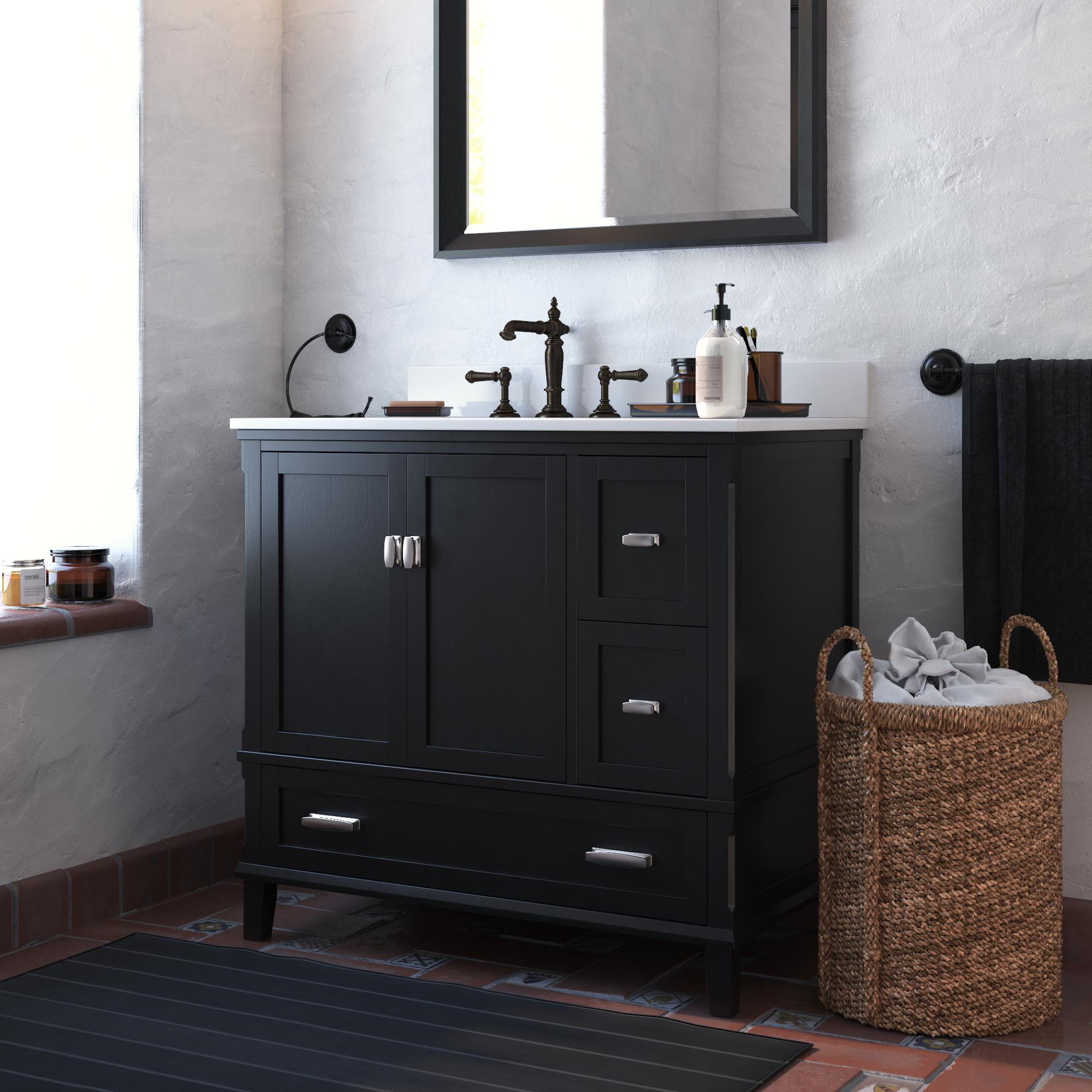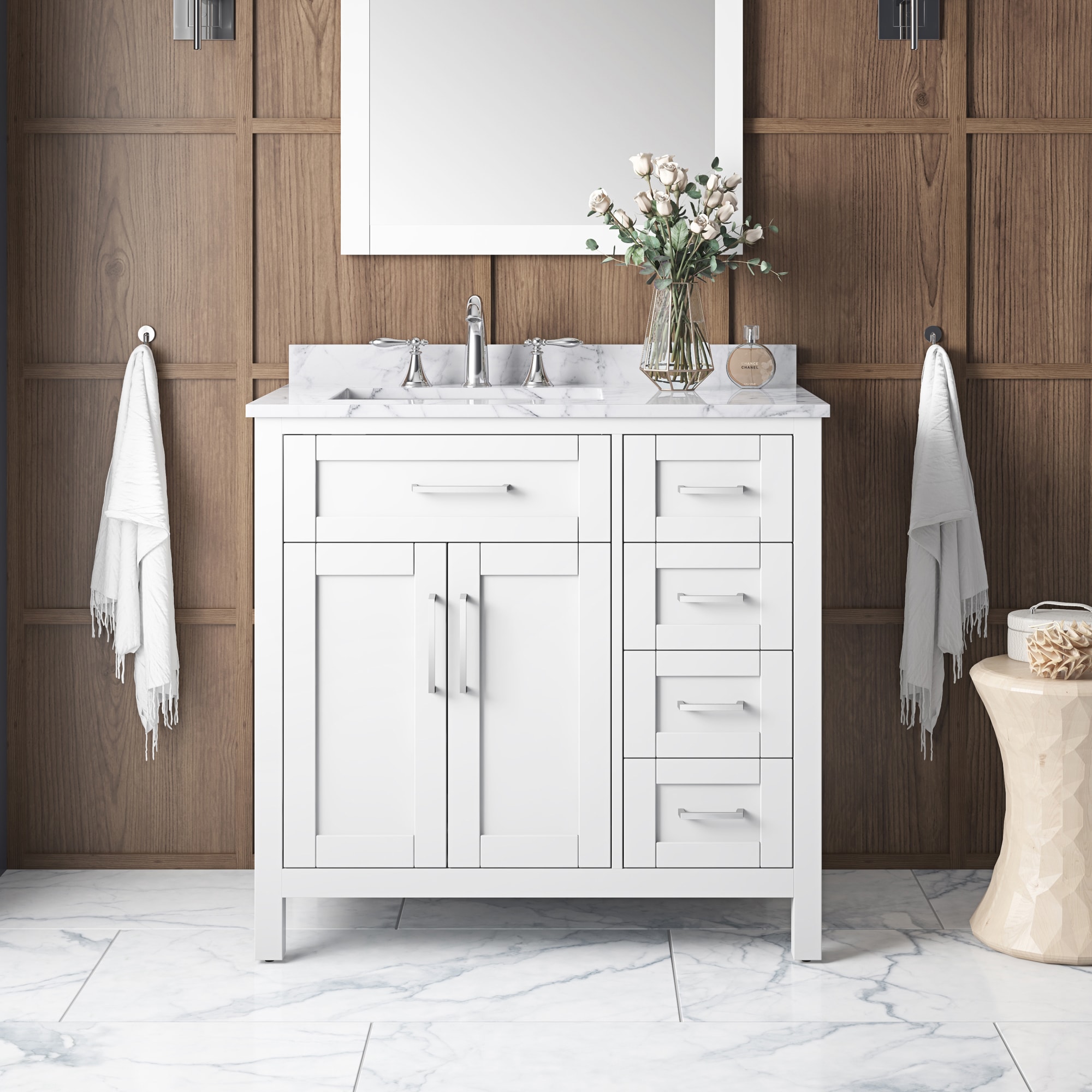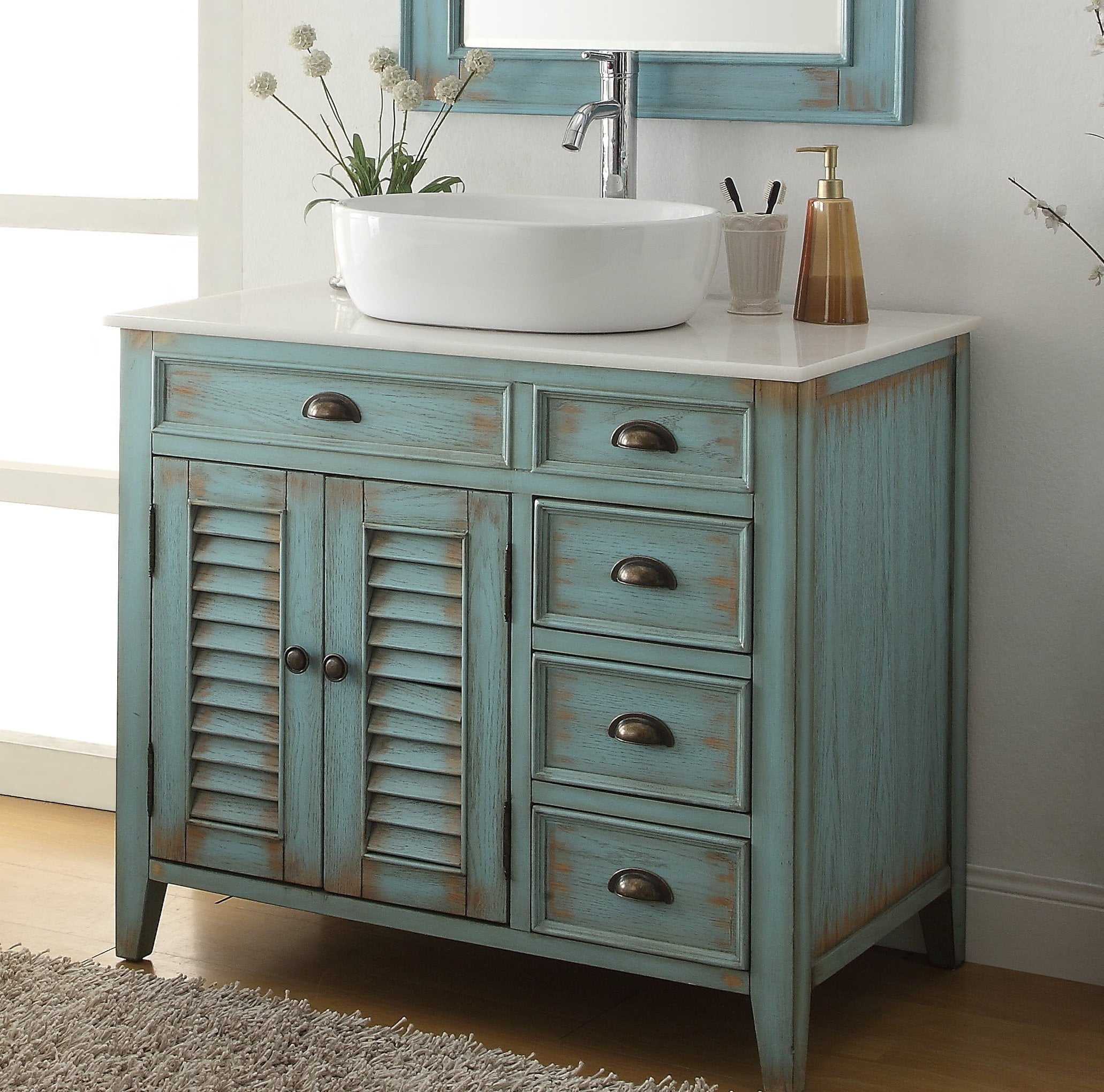Design and Functionality: 36 Bathroom Vanity With Open Bottom Shelf

A 36″ bathroom vanity with an open bottom shelf presents a unique design element that offers both advantages and disadvantages. This design choice impacts the vanity’s functionality, storage capacity, and aesthetic appeal.
Open Bottom Shelf Advantages and Disadvantages
An open bottom shelf in a 36″ bathroom vanity provides a sense of openness and airiness, visually expanding the space. This design element also offers easy access to stored items, eliminating the need to open cabinet doors. However, the open shelf can make the vanity appear less organized, especially if items are not neatly arranged. Additionally, the open shelf may not be suitable for storing sensitive items, as they are visible to anyone.
Storage Capacity Comparison
A 36″ bathroom vanity with an open bottom shelf generally offers less storage capacity compared to one with closed cabinets. The open shelf provides limited storage space, suitable for storing smaller items such as towels, baskets, or decorative accents. In contrast, a vanity with closed cabinets offers greater storage capacity, allowing for more items to be stored discreetly. This option is ideal for maximizing storage space and maintaining a clean and organized bathroom.
Materials for 36″ Bathroom Vanities with Open Bottom Shelves
Various materials can be used for 36″ bathroom vanities with open bottom shelves, each offering distinct advantages and disadvantages.
- Wood: Natural wood, such as oak, maple, or cherry, offers a classic and elegant aesthetic. Wood is durable and can be stained or painted to match any bathroom decor. However, wood is susceptible to water damage and requires regular maintenance.
- Laminate: Laminate is a cost-effective and durable option that mimics the look of natural wood. It is water-resistant and easy to clean. However, laminate can be less durable than wood and may not have the same aesthetic appeal.
- Metal: Metal vanities, such as stainless steel or aluminum, offer a modern and sleek look. Metal is durable and water-resistant, but it can be more expensive than wood or laminate.
Maximizing Storage and Functionality
To maximize storage and functionality in a 36″ bathroom vanity with an open bottom shelf, consider incorporating the following features:
- Adjustable shelves: Adjustable shelves within the vanity allow for customization of storage space to accommodate items of different sizes.
- Pull-out drawers: Adding pull-out drawers to the vanity can provide additional storage space for smaller items.
- Storage baskets: Using storage baskets on the open shelf can help to organize items and create a more visually appealing look.
- Mirror with storage: A mirror with built-in storage can provide additional space for toiletries and other bathroom essentials.
Style and Aesthetics

A 36″ bathroom vanity with an open bottom shelf offers a unique opportunity to create a visually appealing and functional space. The open shelf allows for a sense of openness and airiness, while also providing valuable storage space. This combination of style and practicality can be customized to suit a variety of bathroom aesthetics.
Design Styles
The open bottom shelf allows for a range of design styles, from minimalist and modern to traditional and eclectic. Here are some examples:
- Modern Minimalist: A sleek vanity with clean lines and a simple design. The open shelf can be used to display a few carefully curated items, such as a plant, a decorative bowl, or a stack of towels.
- Contemporary: A vanity with bold geometric shapes and a focus on functionality. The open shelf can be used to store towels, baskets, or other bathroom essentials.
- Traditional: A vanity with ornate details and a classic design. The open shelf can be used to display antique toiletries or decorative items.
- Rustic: A vanity with a natural wood finish and a distressed look. The open shelf can be used to store baskets, towels, or other items that add a touch of warmth and character.
- Eclectic: A vanity that combines elements from different styles. The open shelf can be used to create a unique and personal look by displaying a mix of items that reflect your individual taste.
Visual Appeal and Organization
The open bottom shelf can be used to create a visually appealing and organized space by using these techniques:
- Use baskets and containers: Baskets and containers can help to organize items and keep the shelf looking tidy. Choose baskets and containers in a variety of sizes and materials to suit your style.
- Display decorative items: The open shelf can be used to display decorative items, such as plants, candles, or artwork. Choose items that complement the style of your vanity and bathroom.
- Use color and texture: Add visual interest to the open shelf by using a variety of colors and textures. For example, you could use a basket with a natural woven texture, a ceramic container with a vibrant color, or a plant with lush green foliage.
Finishes and Colors
The finish and color of a 36″ bathroom vanity with an open bottom shelf can have a significant impact on the overall look of the space. Here are some popular options:
- White: White is a classic choice for bathroom vanities. It creates a clean and airy look and can make a small bathroom feel larger.
- Gray: Gray is a versatile color that can be used to create a modern or traditional look. It pairs well with a variety of other colors and finishes.
- Natural wood: Natural wood finishes add warmth and character to a bathroom. They can range from light and airy to dark and rich.
- Black: Black is a bold and sophisticated choice for a bathroom vanity. It creates a dramatic look and can make a statement in the space.
Mood Board
Imagine a bathroom with a 36″ vanity with an open bottom shelf in a sleek, modern design. The vanity is crafted from a dark wood with a satin finish, adding a touch of sophistication to the space. The open shelf is styled with a woven basket filled with plush towels, a decorative bowl filled with soap and bath salts, and a small potted plant. The walls are painted in a soft gray, and the flooring is made of polished concrete tiles. The overall aesthetic is clean, minimalist, and inviting.
Installation and Maintenance

Installing a 36″ bathroom vanity with an open bottom shelf can be a rewarding DIY project, but it requires careful planning and execution. This section will guide you through the installation process, address common challenges, and provide tips for maintaining your vanity for years to come.
Installation Steps, 36 bathroom vanity with open bottom shelf
Installing a 36″ bathroom vanity with an open bottom shelf involves several steps that need to be performed in a specific order. The following steps provide a comprehensive guide:
- Prepare the Area: Clear the area around the installation site. Remove any existing fixtures, such as the old vanity, sink, and mirror. Ensure the floor is level and clean.
- Install the Plumbing: Connect the vanity’s water supply lines to the existing water lines. Be sure to use appropriate fittings and sealant to prevent leaks. If necessary, install a new drain pipe for the vanity sink.
- Install the Vanity: Carefully place the vanity on the prepared area. Ensure it is level and plumb using a level and shims. Secure the vanity to the wall using appropriate fasteners, such as screws or anchors.
- Install the Sink: Place the sink on the vanity top and secure it using the provided hardware. Ensure the sink is centered and level. Connect the sink drain to the drain pipe.
- Install the Faucet: Attach the faucet to the sink using the provided hardware. Make sure the faucet is securely attached and that the water supply lines are connected properly.
- Install the Mirror: Mount the mirror above the vanity using the provided hardware. Ensure the mirror is level and centered.
- Install the Accessories: Attach any additional accessories, such as towel bars or soap dispensers, to the vanity or wall using the provided hardware.
Common Installation Challenges and Solutions
Installation challenges can arise during the process, but with the right approach, they can be overcome.
- Uneven Floor: If the floor is uneven, it can cause the vanity to be unstable. Use shims to level the vanity before securing it to the wall.
- Incorrect Plumbing Connections: Ensure you are using the correct fittings and sealant when connecting the water supply lines and drain pipe. Improper connections can lead to leaks.
- Difficulty Securing the Vanity: If the wall material is not suitable for standard fasteners, use anchors to secure the vanity. Consult a professional if you are unsure about the best approach.
Maintenance Tips
Regular maintenance ensures your vanity remains in top condition.
- Clean Regularly: Clean the vanity surface, sink, and mirror regularly using a mild cleaning solution. Avoid harsh chemicals that can damage the finish.
- Dry Thoroughly: After cleaning, dry the vanity surface, sink, and mirror completely to prevent water spots. This is especially important for the open bottom shelf, which is more susceptible to moisture damage.
- Check for Leaks: Regularly inspect the vanity for leaks, especially around the sink and plumbing connections. Promptly address any leaks to prevent damage.
- Maintain Hardware: Lubricate the vanity hardware, such as the drawer slides and door hinges, periodically to ensure smooth operation.
Replacing Hardware or Plumbing Fixtures
Replacing hardware or plumbing fixtures on a 36″ bathroom vanity with an open bottom shelf is a relatively straightforward process.
- Disconnect the Water Supply: Turn off the water supply to the vanity. This is usually done by turning off the valve located under the sink.
- Remove the Old Fixture: Carefully remove the old hardware or plumbing fixture using the appropriate tools. Take note of the order of parts and any special features, such as gaskets or washers.
- Install the New Fixture: Attach the new fixture to the vanity using the provided hardware. Ensure the fixture is securely attached and that all connections are tight.
- Reconnect the Water Supply: Turn on the water supply and check for leaks. Tighten any loose connections as needed.
